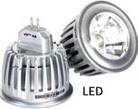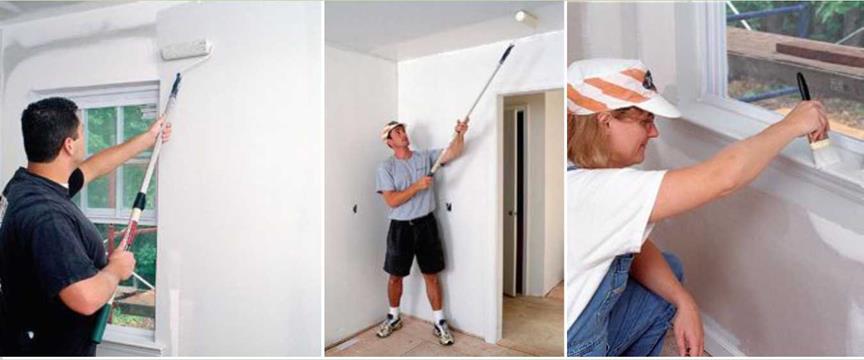Job site goals need to be directed by overall company goals, which will vary depending on the owner’s desires. Here are some examples:
Sample Company Goals:
1. To provide income for framers and the company
2. To provide a safe and enjoyable work environment
3. To coordinate with the general contractor’s schedule and needs
4. To produce high-quality framed buildings
5. To grow the company
6. To develop framing skills
Communication
Communication is to a lead framer what a hammer is to a framer—one of your most important tools. Before you were a lead framer, you had to communicate with only one person—most likely the lead contractor or superintendent. As a lead framer, you will be communicating with these same people, but also possibly with the architect, engineer, owner, and the crew.
Each one of these people comes from a different environment, has different knowledge and experience, and different goals related to the job you are framing. Good communication is based on honesty, trustworthiness, openness, and effective listening skills. Keep in mind that bad communication creates problems, while good communication solves problems.
Communicating with Framers
Each framer who works for you will have his or her own unique characteristics, personality, background, and place of origin. It’s probably impossible to know all the sides of all framers, but the more you get to know them, the easier it will be to communicate with and teach them.
Communicating with the Framing Contractor, Superintendent,
Architect, Engineer, or Owner
We all know how to talk—some better than others. What we don’t always know is what to say and who to say it to. That will vary depending on the size of the job and the organizational structure of the companies doing the building. If you say the right thing to the wrong person, or the wrong thing to the right person, you might end up causing yourself delays and/or additional work.
The nature of the construction industry lends itself to communication errors. With each new building, you might be working with a completely new group. In many cases, an owner will select the team that will design and build the building. The architect may have a great sense of how the finished building will look and feel, but probably won’t be familiar with framing slang and concepts. The architect may hire an engineer to design the structural members of the building. Once the plans are complete, the owner will hire a builder who subcontracts the framing to your employer. You’ll then have to frame the building based on plans that may have been passed around, worked on, and changed by a group of people who may not have worked together before, and who may have varying degrees of experience or knowledge of what you have to do to frame the building.
Solving Problems on the Plans
Chances are, there will be some mistakes, omissions, and/or details on the plans that just don’t work. The parties involved in the design of the plans are capable of making mistakes in the same way you and your crew can make mistakes. Be ready to deal with these problems as they arise.
Good communication is probably your biggest strength when it comes to resolving mistakes or processing changes. The smaller the building, the easier it will be to navigate mistakes, and thereby reduce extra cost and time delays. Sometimes all it takes is a quick conversation with the superintendent. On bigger jobs, however, it may be necessary to get input from all members of the building management team, all the way back to the owner. In these cases, be sure to present the information in an organized way to prevent delays. The following five steps organize the process of solving problems with the plans:
1. Identify the problem: The information may be missing from the plans, or the design may just not work. It could also be that the information you need is in another part of the plans, not where it is usually located.
2. Have another framer review the situation: When you find a mistake, make sure it really is a mistake. One way to do this is to have one of your crew look at it. Even if he doesn’t have the knowledge to fully analyze the situation, just explaining it to him helps you review it in your own mind.
3. Develop a solution: It is usually worth your time and energy to develop an easy solution and write it down. Very often your suggestion will be accepted. This saves the person who made the mistake from having
to work out a solution—which could take days or even weeks and could be more difficult to frame than need be. Along with your proposed solution, you should note any extra costs that would result.
4. Identify and seek out the person responsible: Typically, if the mistake is in the architectural plans, it will be an architectural mistake. If it’s in the structural plans, it’s probably an engineering mistake. Quite often, however, it’s a coordination mistake between the architect and the engineer. If you’re lucky enough to
have direct availability to the parties involved, a quick phone call might provide an easy solution. Remember that framing contractors, general contractors, architects, engineers, and owners all have relationships. Go to the source whenever possible, but be careful to go through proper channels for communication. Get permission, if necessary, to directly contact the appropriate party.
5. Clarify the solution: Each job has its own chain of authority. Sometimes the general contractor takes responsibility for solving problems; sometimes it’s the owner or architect. Direct your suggested solution to whoever accepts the authority. Whether they agree with your solution or propose their own, be sure it is written down and dated, along with the name of the person who proposed the solution. Write it on the plans for easy reference. Do this while the person is still there to make sure you understand their interpretation of the solution. This way, you’ll be protecting yourself in case of any future confusion.
Delayed Communications
Organizing your communication is another important task of a lead framer. For example, you might realize that you need more material or hardware, but the person who orders it is not on the site. By the time you see that person, however, you are onto another task and may forget to let them know what you need.
The easiest way to avoid this problem is to carry a small notebook in your pocket, and write down what you need, whether it’s information or materials. Get used to checking your notebook whenever you talk to the people who supply your material or process your change orders, or when you are making phone calls. The notebook acts as a memory aid when communications are delayed.
Assigning Framers Tasks
As lead framer, your most important job is to assign framers to tasks. If they are unfamiliar with the
tasks, it’s part of your job to teach them how to do the work. It may be tempting to just grab the right tool and take care of the problem yourself, but if you don’t teach your crew, they won’t be able to work independently, and neither will you.
Organizing your crew and assigning tasks can be the easiest part of your job, or it can be the most difficult. A lot of it has to do with the framers you have working for you, and the way you manage them. For example, one individual with a bad attitude can disrupt a whole crew, or a crew without proper direction can work all day and get little done.
When you first start leading, you’ll quickly realize that it takes a lot of preparation to keep the whole crew busy all the time. As each framer finishes a task, you must have another task ready. If a task isn’t ready, the framer(s) will have to wait around while you get it ready for them.
If you are working on a task and one of your crew needs something to do (and you don’t have anything else for him to do), show him what you are doing so that he can help you or take over. Or have him get started on the next phase of the job. The point here is that if anyone is going to be standing around scratching his head, it should be you, because you can always use the time to plan for the next step.
Analysis of Crew Performance
For your framers to become better framers, they should have an understanding of how well (or not) they are performing their jobs. Crew analysis is the process of answering this question. It is important to know the capabilities of each framer, so you can assign him to the kind of task where he’ll be most productive and know how much supervision or instruction he needs. Discuss these things with your framers. Their feedback will help you understand and evaluate them.
The “Framer Analysis" form can be used to evaluate your crew and to show your framers what aspects of their work are important to you. This is also a good format for deciding wage increases based on performance. The framer who consistently gets high ratings may get more money if he reaches a certain skill level.
To use the form, give the framer a rating from 1 to 10 for all the items listed. The “Value Factor" column in this form is an estimate of the comparative value of the productivity items. You can change these values to your own preferences. Enter your rating in the column titled “Framing Rating 1 to 10." Multiply the rating by the various value factors and put the results in the column labeled “Total." Add the total ratings. This will give you a value you can use to compare your framers’ performance. You can use the Framer Analysis form for your own planning purposes or to show framers where they need to make improvements.







 can be installed where there is an existing incandescent fixture and can be dimmed with the existing incandescent dimmer. No special wiring or dimmer is needed.
can be installed where there is an existing incandescent fixture and can be dimmed with the existing incandescent dimmer. No special wiring or dimmer is needed.










 Speaking of mixing, have your paint store mechanically shake the paint for you—unless, of course, the manufacturer’s instructions indicate it shouldn’t be shaken. For example, polyurethanes and varnishes trap air bubbles when shaken.
Speaking of mixing, have your paint store mechanically shake the paint for you—unless, of course, the manufacturer’s instructions indicate it shouldn’t be shaken. For example, polyurethanes and varnishes trap air bubbles when shaken.